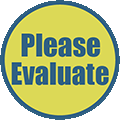Health Assessment of the Preschool Child (12 months - through 4 years)
Health maintenance visits are scheduled at 12, 15, and 18 months, 2 years, and yearly thereafter.
The preschool child rapidly develops complex social and neurobehavioral capabilities, and the parents often have questions about the child's behavior and social functioning. Knowledge and experience are needed to differentiate normal variations from abnormal behavior. Use this opportunity to observe normal and abnormal growth and development in preschool children, and observe how experienced pediatricians approach these problems.
If a complete family medical and social history has not previously been obtained, do so now along with the toddler/preschool age health assessment.
Beginning at around 2 years, it is possible for the clinician to have a conversation with the child. But don't try to obtain any useful medical information. The answers you get are likely to be random and make-believe. That doesn't mean you should not communicate- it is a lot of fun and helps to put the child at ease.
By three years of age, children ask lots of questions about the doctor's office and what you are doing. By explaining to the child, you can model good communication skills for the parent and also observe how the parent reacts to the child's behavior. Tell the child what you are going to do. Doctor: "Now I'm going to check your lungs". Child: "What's lungs?" Doctor: "Lungs help you get air". Child: "What's air?" This conversation can go on as long as you like.
A good way to relax the child is to allow him or her to sit on the parent's lap during the exam. Drawing a little smiley face on the end of a tongue blade and playing a game of hide and seek with the face can help distract a nervous child.
Almost all the important organ systems can be examined with the child on the parent's lap. Using your own examination equipment can prevent the need to place the child on the examination table or pulling the cord of the otoscope across the room to where the parent is sitting. A fearful child on the exam table may take two people to hold, but with the child in the lap, the parent can cuddle the child's hands while you examine "difficult" areas such as the throat and ears. Keep talking to relax the child. Don't speak too loudly. Use a comfortable tone of voice. Children are little, but not hard of hearing. Loud voices usually turn them off. Children also like eye contact.




